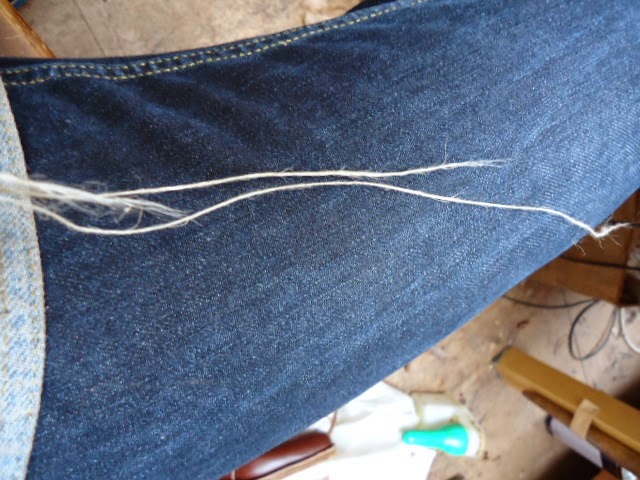This week everything I have ever learned about shoemaking has been stood on its head as I took on the challenge of replicating a particular finish on a customer's boots. The customer is very keen that they should be as close a replica as possible and everything about these boots totally goes against the norm. (I know, I know - what were we thinking!)
Anyway, where sole edges should be sharp and square, they are round; where the heels should be smooth they are dented; and where our usual finish is waxed and smooth, although high-shine the texture underneath is raw.
The boots' journey started with the channelled soles...
For now I'm sharing the trials and tribulations of shaping the heels. As you'll have seen last week, I kept the welt full, under-welted with my sole stitches and then sunk the stitches in a channel on the underside of the sole. (The fore part will be covered by a thick rubber mid sole).
With the split lifts in place, I contemplated how best to recreate and colour the heels. We spent some time earlier in the week mixing a variety of dyes to paint onto the edges and also soaking the heel lifts in baths of dye. much was to no avail - the dye penetrated the surface but did not soak into the leather as we wanted despite glassing the surface. Water based dyes were more successful, but still the results were not ideal.
Finally I decided to just crack on and build the heels and then to tackle the colouring after they were finished. To add to the challenge each lift in the heel is a different colour and is made up of a number of different pieces. My first choice was stiff toe puff belly cut into sections and skived where appropriate.
I got one heel built, but unfortunately it turned out the lifts compressed too much and looked a little too thin.
Disappointed, I pulled the heel off and started again, this time with thin heel lifts. Rather than cut each lift into sections I left them whole aiming to use a screwdriver blade to recreate the dents in the surface where the sections would join.
Although these lifts are a little thicker looking than in the original, the overall result is more successful and will be stronger longer term. At this point I was in two minds whether to rasp, glass and sand as usual. I decided to go ahead as usual. However, when I inked and polished the lifts the end result was too pale and blended; too neat a finish from the original.
Today I will be re-glassing and then staining the lifts darker to see if that will improve things. Fingers crossed.
And that, fellow shoemakers, is what they call 'a cliffhanger'! To find out how they turn out, tune in again next week. Until then happy shoemaking!
















































